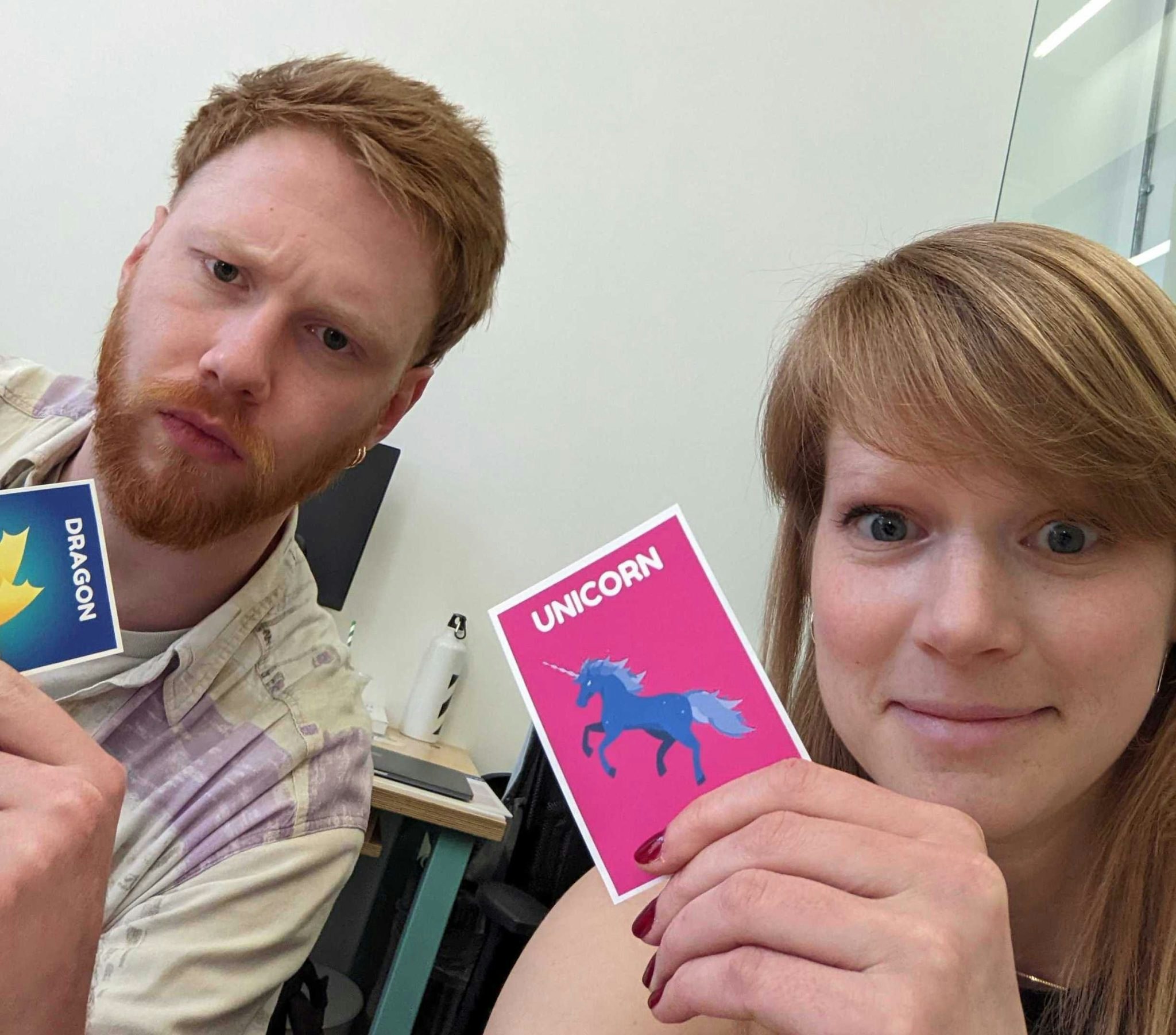Most VCs learn the tricks of the trade on the job. You can’t learn to spot the next Mark Zuckerberg or Whitney Wolfe Herd in school, right?
Chris Rangen and Scott Newton respectfully disagree. The duo say they can teach the basics of raising and deploying a fund in as little as a day.
They’re not the only ones. A few VC training programmes have popped up in recent years, mostly with the aim of helping traditionally underrepresented talent break into the biz. One — the Newton Venture Program, a joint venture between LocalGlobe, London Business School and Silicon Valley Bank UK — is planning to pilot Rangen's materials with their alumni fellow network.
Here at Sifted, we also spend a lot of time trying to get inside the brains of VCs. So when Rangen told me he could get us ready to raise Sifted’s first fund, I signed the team up.
The deal: a free ticket to VC bootcamp in return for a review on Sifted.
Enter the VC Matrix
The “training” involved dice, a Monopoly-esque board with different “outcomes” and mismatched Playmobil characters to move around instead of top hats and Scottie dogs.
The game simulation took us through the whole process of setting up, raising and running a VC fund. We had to find LPs while keeping our eye on dealflow, close our fund, then grow our companies and eventually exit them, returning millions to our LPs and scoring ourselves a very nice holiday home.
Sifted split into four teams; my team and I decided to found a $50m seed-stage fund focused on Africa, named affectionately after a team member’s dog, Robin.

We would invest in “people-first” businesses. I thought the finance-bro mumbo-jumbo would make it easier to justify investments; speedy grocery is people-first, right?
I realise now that I should have worn my Allbirds and Patagonia vest for said simulation but alas, I own neither — yet. But even after just a few hours in the VC jungle simulation, I did learn a few things…
1/ Limited partners (LPs) are hard as s*** to find
We found LPs (the investors who give VCs money to invest) by moving around the board and drawing LP cards from a few different categories — all the way from angel investors to mega institutions ready to commit hundreds of millions of dollars.
We all spent A LOT of time, in the beginning, trying to find the right LPs. Sometimes they were too big. Sometimes they were too small. Sometimes they had ridiculous requests — they wanted to be on the investment committee, or would only let us invest in Armenian edtech startups.
We found an LP to put $20m in our fund early on which helped us do a “first close” and start investing a little while we scrambled for others. Lesson learned: the LP search in 2022 might be nastier than even the London dating scene.
2/ It actually costs money to run a VC fund
My compatriots and I greedily decided on juicy salaries for ourselves when we started, only to find that we had to pay for a lot of other silly things. We couldn’t have our cake and eat it too — until we had proven ourselves.
Legal fees, office rent, venture partners… they all gobble up cash fast. And if you haven’t closed LPs yet to take management fees, you end up cutting your salary and paying out of pocket. Ouch. It’s obvious how things can be difficult for emerging fund managers who aren’t millionaires or billionaires already.
3/ Other funds are your best frenemies
While you are competing against other funds for deals, you do also need to stay chummy with them to get into hot deals or participate in later rounds. That was super important for us as a seed fund; our fund was only $50m, so we couldn’t keep on putting huge cheques into later deals raised by our portfolio. We needed co-conspirators.
Our decision to buddy up with Dealing Chris (not his real name) and Gilets Jaunes Capital helped get us into the superhot Shark Fin deal. The rocketship company was our first unicorn and returns from the investment allowed us to pay back our LPs many times over.
4/ Focus not FOMO
Once everyone had closed their funds and started seriously deploying capital in startups, frenzied FOMO set in. Who was investing in what? Did we miss any deals? Should we open a Miami office and pay ourselves in NFTs?
It was at this moment that we began to forget our original “people-first” mission. Shiny AI startups scant on details but with very friendly investment terms started to look very, very appealing.
But we needed to remember our obligations to LPs and our fund size and stay focused. That kept us from investing too quickly but actually waiting to see the deals that worked for us. (In theory.)
5/ The power law is so real
After a few turns, it became very clear which companies in our portfolio would do well, and which wouldn’t. We were hitching our horse to Shark Fin and going straight to the top.
That meant pooling resources away from other portfolio companies — like not participating in follow-on rounds or not giving them advisory support. Sure, we promised them that when we invested, but it wasn’t in the contract, was it? We only needed one company to succeed and convince everyone we were capable of raising a second fund.
Will you invest?
I’m still sore that our editor Amy and our reporter Kai, managing partners of Ginger Capital — a, you guessed it, VC fund focused on investing in startups with at least one red-haired cofounder — blew us all out of the water with a 54x return.
But I’m very proud of our 7.4x return. If you need your next female partner, you know where to find me.



